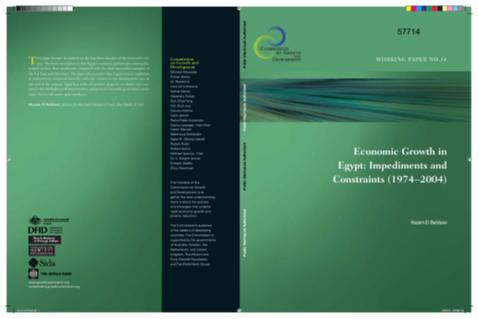Resource information
The paper focuses its analysis on the last three decades of the twentieth century. The basic assumption is that Egypt's economic performance during this period was less than satisfactory compared with the most successful examples in the far East and elsewhere. The paper also assumes that Egypt's initial conditions at midcentury compared favorably with the winners in the development race at the end of the century. Egypt has achieved positive progress, no doubt, yet compared with the higher performers in Asia, and given its favorable good initial conditions, the record seems quite mediocre. By mid-twentieth century, Egypt's agriculture had almost reached its limits. Egypt, therefore, faced a new challenge: a need to transform itself into an industrial society. This objective was only partially achieved. The paper identifies three interrelated factors that helped hinder Egypt's accession to a new industrial society. The first factor is a strong state and a weak society. An authoritarian state that in its endeavor to preserve its prerogatives had to give up good governance practices and limit the creative initiative of the individuals. The second factor is a semi-rentier economy. The availability of windfall revenues not only reduced the pressure for change but also promoted a new rentier mentality that undermined the emergence of an industrial spirit. The third factor is an inadequate education system. This system failed to provide the proper skills and values required for the industrial society. These factors, moreover, are interdependent and reinforce each other.


